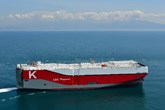LNG to grow in Sub-Saharan Africa - Part One
Due to the existing and recently discovered vast natural gas reserves within Africa, the region is predicted to emerge as a huge producer of natural gas. It was estimated in 2013 by BP that the continent holds approximately 500 trillion ft3 in proven natural gas reserves, explaining why many nations are currently expanding or developing infrastructure to accommodate the production of LNG.
Traditionally, within Sub-Saharan Africa, West Africa has been the LNG producing region with Angola, Equatorial Guinea and Nigeria having existing LNG liquefaction capacity. However, the region now faces competition from East Africa where both Mozambique and Tanzania are developing new LNG export facilities. The close proximity of these nations to their export markets within Europe and Asia, coupled with falling transportation costs, provide the region with a distinct advantage compared to other international LNG producers.
However, the development of the LNG liquefaction sector within Sub-Saharan Africa currently has many obstacles scattered along its development pathway. Regulatory and political barriers need to be removed to secure foreign investment and LNG offtakers must also be in place. It is crucial that emerging LNG producers enter the market at the right time, allowing the region to secure its competitive position, whilst exploiting its resources.
East Africa
East Africa has no existing LNG liquefaction capacity. However, with discoveries and increasing reserve estimates of natural gas resources, particularly within the Rovuma Basin, Mozambique and Tanzania are likely to emerge as key players within the global LNG liquefaction sector. Both Mozambique and Tanzania are estimated to hold a combined 200 trillion ft3 of natural gas reserves and are unsurprisingly attracting the required foreign investment that is needed to develop the LNG liquefaction infrastructure.
Mozambique
It is estimated that Mozambique holds 150 trillion ft3 of natural gas. The country’s offshore gas fields have been highlighted as feedstock for three LNG facilities that are currently under development, with the onshore LNG plants outlined as some of the most ambitious projects in the world.
The largest of these LNG projects will be located onshore at the Afungi LNG Industrial Park. The project is being jointly developed by Eni and a consortium led by Anadarko, who operate Area 4 and Area 1, respectively. After encouragement from the Mozambican Authorities, both entities signed a Heads of Agreement in early 2013 to collaborate on the development of the onshore and offshore infrastructure to reduce costs and environmental impacts. It is proposed that the facility will host a total of 10 LNG liquefaction trains, each with a capacity of 5 million tpy, making this potentially the world’s largest LNG liquefaction facility.
However, the project is progressing slower than initially scheduled. Phase 1 of the development, which involves the construction of Trains 1 and 2, was initially expected to commence operations in 2018, but with no final investment decision (FID) having been made, it is now more realistic that the facility will begin operations around 2020. There have also been delays in awarding the engineering, procurement and construction (EPC) contract. The three-way competitive front-end engineering and design (FEED) process commenced in December 2012 with each of the three selected companies completing the FEED work and additionally submitting EPC plans. A final decision regarding the EPC contract is yet to be announced, and the timeline within which this will occur is unknown. Still, with Anadarko having secured offtakers for two-thirds of the capacity of Train 1 with Asian customers, it suggests that the project will certainly go ahead.
Eni is also developing a floating LNG (FLNG) project with a proposed LNG production capacity of 5 million tpy, which is due to come onstream earlier in 2019. The vessel will be located approximately 30 miles offshore Mozambique and will be fed by the Coral gas discovery, within Area 4, which is estimated to hold between 7 and 10 trillion ft3 of gas in place. This project is currently in the FEED stage with EPC bids scheduled to be submitted in May 2015. The FID is expected to be made around a similar time. Eni is looking to expand the project by deploying a second FLNG vessel.
Eni is further involved in developing Mozambique’s third LNG liquefaction facility, which will also be fed by Area 4. The facility, which will be located onshore at Quionga near the Tanzania border, is still within the very early planning stages.
The ‘Mozambican New Petroleum Law’ entered into force in August 2014 as the previous legislation was considered insufficient for such a rapidly developing oil and gas sector, and additionally it did not cover LNG facilities.
The new law aims to increase the share of benefits that Mozambique will receive from its natural resources and also sets out to establish the High Authority for the Extractive Industry who will regulate activity. However, this new law is not applicable to existing holders of upstream concessions who are planning to develop any related LNG liquefaction facilities, e.g. Eni and Anadarko. It therefore makes it unclear what the implications of the new law are for any LNG projects that are initiated in the future.
The new law also outlines local content requirements that are applicable to goods and services required to develop the industry. International companies are required to provide employment and training opportunities to nationals, particularly those within the area surrounding the project, to develop a skilled local workforce. Additionally, the law aims to increase to 25% the amount of natural gas that is received for domestic utilisation.
This article originally appeared in the June 2015 issue of LNG Industry. Part Two will be available soon.
Written by Fiona King, EIC, UK. Edited by Katie Woodward
Read the article online at: https://www.lngindustry.com/special-reports/15062015/eic-africa-article-part-1/
You might also like
‘K’ Line receives LNG-fuelled car carrier
An LNG-fuelled car carrier with a capacity of 6900 vehicles has been delivered to Kawasaki Kisen Kaisha, Ltd.

